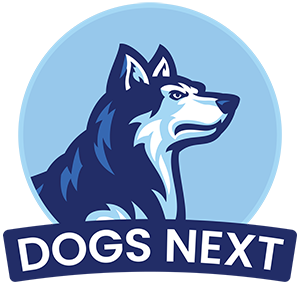Yes, German Shepherds may respond better to German commands. It’s related to their origin and training history.
German Shepherds are intelligent and versatile dogs. Their name hints at their roots in Germany. As a result, many are trained using German commands. This practice has historical and practical reasons. German commands can be more distinct and clear for these dogs.
For owners, speaking German can add an element of tradition and authenticity. But do all German Shepherds need to learn German? Is there a noticeable difference in their response to commands in different languages? This introduction explores whether the language truly matters and what it means for training your German Shepherd. Let’s dive deeper into this intriguing topic.
The Role Of Language In Dog Training
German Shepherds are known for their intelligence and trainability. Many wonder if these dogs respond better to commands given in German. Understanding the role of language in dog training can help dog owners make informed decisions. Language plays a significant part in how effectively you communicate with your dog. It impacts their ability to understand and follow commands. Let’s explore this intriguing topic.
Learn Commands In Any Language
When it comes to teaching dog commands, the specific language you use is less important than how you use it. German Shepherds can learn commands in any language. The key lies in consistency and clarity. You can teach your German Shepherd to respond to English, German, or any other language with the same effectiveness.
Here are some points to consider:
- Clarity: Ensure commands are clear and distinct.
- Consistency: Use the same word for the same command each time.
- Tone: Maintain a firm but calm tone.
Some popular commands in German include:
| Command | German |
|---|---|
| Sit | Sitz |
| Stay | Bleib |
| Come | Komm |
Using German commands for shepherds can be advantageous. It is a language often used in professional dog training. But remember, it is the training method that matters most.
Training Consistency
Consistency in training is vital for success. German Shepherd training language should remain the same throughout the training process. This helps avoid confusion and reinforces learning.
Here are some tips for maintaining consistency:
- Regular Practice: Practice commands daily to reinforce learning.
- Family Involvement: Ensure all family members use the same commands.
- Positive Reinforcement: Reward your dog for obeying commands.
Using the same language and commands ensures your dog understands what is expected. It creates a stable learning environment. This stability is crucial in language and dog training.
Remember, changing commands mid-training can confuse your dog. Stick to the chosen language for the best results. Whether you use English or German commands for shepherds, consistency is the key to effective training.
Why German Commands Are Popular
Do German Shepherds respond better to German? Many people believe that using German commands can improve obedience and communication with these intelligent dogs. But why are German commands so popular? Let’s delve into the reasons behind their popularity.
Traditional Commands Originated From History
Traditional dog commands have a rich history, deeply rooted in the origin of German commands. German Shepherds were first bred in Germany, where they were trained using German words. This tradition has continued, making German commands a preferred choice for training.
There are several reasons for German commands’ popularity:
- Distinctiveness: German commands sound different from everyday English words, helping dogs distinguish commands from regular conversation.
- Consistency: Using traditional dog commands ensures uniformity in training, whether in Germany or elsewhere.
- Heritage: Many trainers and owners prefer to honor the breed’s origin by using German commands.
Using German commands can also enhance the effectiveness of training. Dogs trained with unique cues often respond faster and more accurately. This is because the commands are less likely to be confused with other words they hear daily.
Here’s a table of some common German commands and their English equivalents:
| German Command | English Equivalent |
|---|---|
| Sitz | Sit |
| Platz | Down |
| Bleib | Stay |
| Komm | Come |
| Fuß | Heel |
Training with unique cues like these not only honors the breed’s heritage but also provides clear and distinct commands for the dog. The origin of German commands in traditional training methods has solidified their place in modern dog training practices.
Tips For Effective Training
Do German Shepherds respond better to German? It’s a common question among dog owners. Training a German Shepherd can be a rewarding experience. Understanding the most effective training methods is key. Here are some tips for effective training.
Choose A Language And Stick To It For Clarity
Choosing a language for your dog’s training is crucial. Whether you opt for German or English, consistency is key. Dogs respond well to clear commands. Switching between languages can confuse them.
German Shepherds are intelligent and quick learners. Using German commands can be effective. The reason is their history. Many German Shepherds were originally trained in German. But the language itself is not the magic solution. The consistency in training is what matters most.
Here are some clear commands for dogs in German and English:
| German | English |
|---|---|
| Sitz | Sit |
| Platz | Down |
| Bleib | Stay |
| Komm | Come |
Choose a language and stick to it. This helps in reinforcing training habits. It ensures your dog understands what you expect. Use clear, concise commands. Avoid long sentences. This makes it easier for your dog to follow instructions.
Use Positive Reinforcement
Positive reinforcement is a powerful tool in dog training. Rewarding good behavior encourages your dog to repeat it. This method is effective for consistent training methods. It builds a strong bond between you and your dog.
Here are some positive dog training tips:
- Give treats for good behavior.
- Use verbal praise like “Good job!” or “Well done!”
- Incorporate petting and affection as rewards.
- Use toys and playtime as incentives.
Rewards should be immediate. This helps your dog link the reward to the behavior. Be patient and consistent. Training takes time and repetition. Use a variety of rewards to keep your dog engaged.
Positive reinforcement also involves ignoring bad behavior. Don’t punish your dog. Instead, redirect them to the desired behavior. This approach fosters a positive learning environment. It makes training enjoyable for your dog.
Consistency in using positive reinforcement is vital. It ensures your dog understands what behaviors are rewarded. Clear commands and positive reinforcement work hand in hand. Together, they create an effective training routine.
Frequently Asked Questions
Do German Shepherds Understand German Commands?
Yes, German Shepherds can understand German commands. They are intelligent and can learn commands in any language. Consistency is key.
Is Training German Shepherds In German More Effective?
Training German Shepherds in German can be effective. The language itself does not matter. Consistent and clear commands are more important.
Are German Commands Better For German Shepherds?
German commands are not inherently better. The effectiveness of training depends on consistency and clarity. Dogs can learn commands in any language.
Can German Shepherds Learn English Commands Easily?
Yes, German Shepherds can learn English commands easily. They are highly trainable and can adapt to any language with proper training.
Conclusion
German Shepherds can respond well to German commands. But language is not everything. Consistency and tone matter more in training. Dogs understand your emotions and body language. Use clear, simple commands for best results. Training success depends on your patience and love.
German or English, your bond is key. Keep training sessions fun and rewarding. Enjoy the journey with your loyal friend.

I’m David, an expert contributor and writer, with two furry friends of my own, I know the challenges of raising and caring for dogs. From training to nutrition and health, my goal is to provide valuable insights and advice to help create strong bonds and happy, healthy lives. Find me in Twitter.




